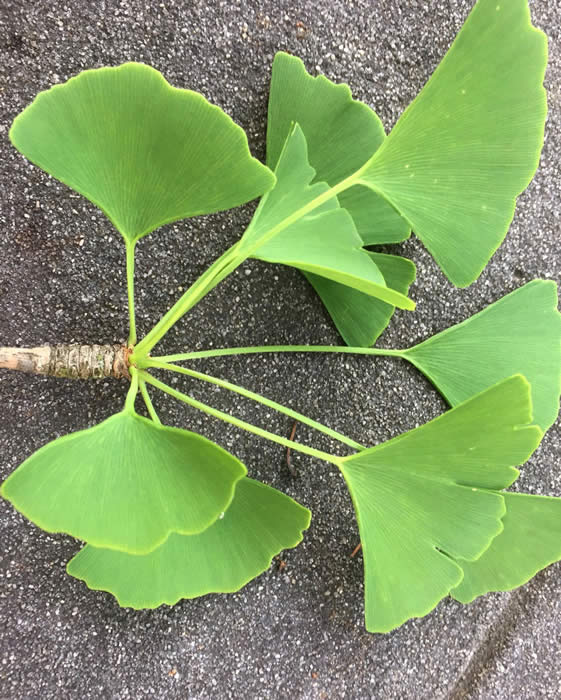 East Stroudsburg University's Arboretum
East Stroudsburg University's Arboretum
IF YOU GO
Where: Throughout the campus of East Stroudsburg University, East Stroudsburg, Pa.
Trail information: “Arboretum Guide: The Trees of the ESU Campus” is available at the Moore Biology Building and at the Schisler Museum of Natural History inside the Hoeffner Science & Technology Center, both on Normal Street, East Stroudsburg. The “trails” are sidewalks.
KNOW BEFORE YOU GO:
• Open dawn to dusk.
• Be respectful of others using the university grounds.
• Metered parking is available on the streets. Parking lots are limited to students and faculty.
• Leashed dogs welcome. Owners must clean up and carry out waste.
• No sanitary facilities.

Walk the tree museum of ESU’s arboretum
By Carol Hillestad
The sidewalk was hot. The air shimmered under a hazy sun. The cool green shade of trees at East Stroudsburg University’s arboretum was a blessing on a steamy Sunday in July. I was there to meet Dr. Emily Rollinson, assistant professor of plant ecology and botany, for a tour of the arboretum.
An arboretum is a botanical garden devoted to trees — a sort of living museum. Over the years, many kinds of trees have been planted and grown to maturity at ESU, both native and exotically non-native.
From where I stood, in one direction I could see an import from Europe, an enormous copper beech. In the other was the fluttery crown of a gingko, an import from Asia, whose pedigree reaches back 270 million years in the fossil record. This was going to be interesting!
Emily approached, a guide to the arboretum in hand. “Arboretum Guide: The Trees of the ESU Campus” is the work of students, members of the university’s Environmental Club. The guide maps where trees of interest are located throughout the campus, identifies them and highlights interesting facts and characteristics of each one.
 Emily and I set off to explore the arboretum’s western section. She is a natural teacher and talks with enthusiasm about what are seeing. The distinctive grey bark of copper beech looks like an elephant’s hide — but is actually quite thin, and susceptible to sunburn. That lovely gingko tree will turn bright yellow in fall. When its fleshy seeds ripen and fall, they give off a very disagreeable odor, she says.
Emily and I set off to explore the arboretum’s western section. She is a natural teacher and talks with enthusiasm about what are seeing. The distinctive grey bark of copper beech looks like an elephant’s hide — but is actually quite thin, and susceptible to sunburn. That lovely gingko tree will turn bright yellow in fall. When its fleshy seeds ripen and fall, they give off a very disagreeable odor, she says.
We pass the shapely pyramid of an American holly, the only holly native to the United States, and a small native shadblow, one of the first spring bloomers to brighten our forests in eastern Pennsylvania.
In the Poconos, trees are as much a part of daily life as the creeks and streams they shade and help keep cool. In a long-ago science class, did you ever seal a plastic bag around the stem of a potted plant? The inside of the bag quickly becomes coated with misty droplets of water. One large tree can lift as much as 100 gallons of water a day out of the ground, extract the nutrients it needs and then “breathe” the rest into the air.
All the water that ever was on earth is here now, recycled endlessly over eons. Trees are part of that cycle. And now, climate scientists have found that as trees cycle water out of the ground and into the air, they actually cool the earth’s surface — gorgeous, green, natural air conditioners.
Not far from campus, the historic Brodhead Creek flows toward the Delaware River. Our creeks and forested land work together naturally, keeping water pure, for us and for millions of people downstream. It’s hard to believe there were times in our history when these green hills we take for granted had been cut to the ground — not a shrub or sapling left to cool the creeks, protect trout, shade homes, or keep soil from eroding and fouling our water.
Strolling these manicured grounds with Dr. Rollinson, taking in the beauty of nature’s endless variety, I feel refreshed. And hopeful. Come join this urban hike and see what walking among trees can do for you!
Carol Hillestad is a hike leader and writer for Get Outdoors Poconos, a grant-funded series administered by Brodhead Watershed Association.
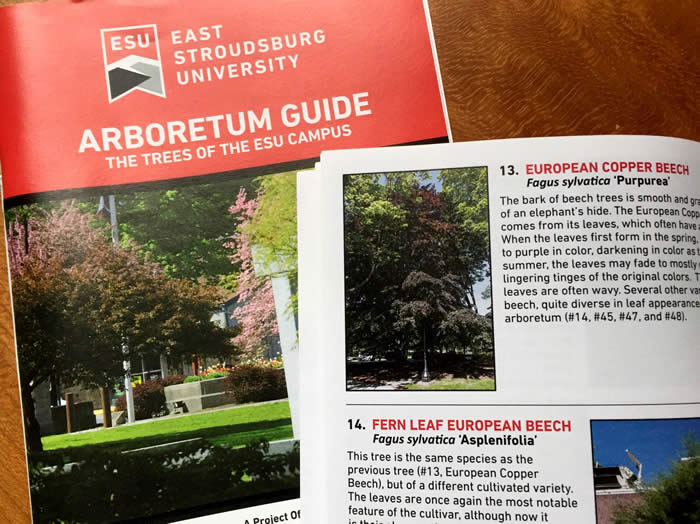 |
||
| “Arboretum Guide: The Trees of the ESU Campus” is available at the Moore Biology Building and at the Schisler Museum of Natural History inside the Hoeffner Science & Technology Center, both on Normal Street, East Stroudsburg. |
 |
||
| A gingko |
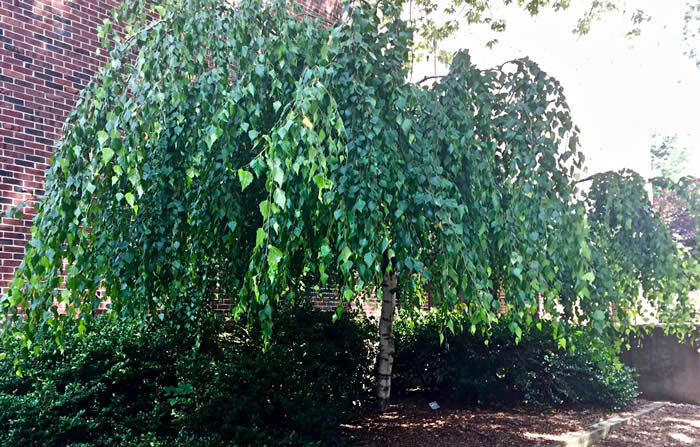 |
|
| Weeping birch |
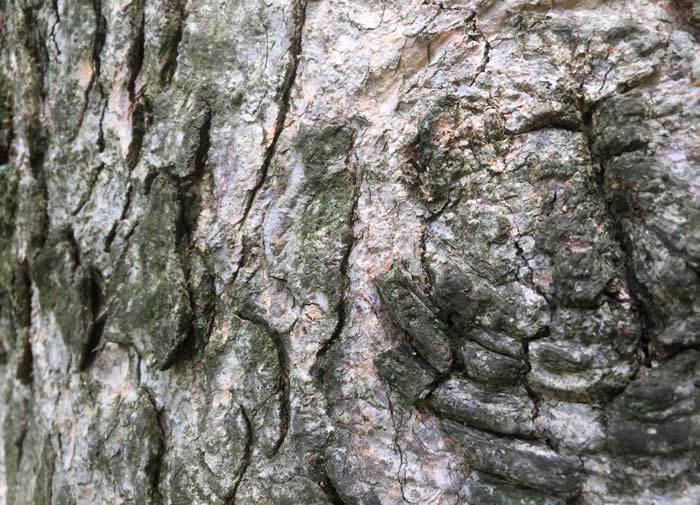 |
||
| This hemlock has grown bark over a wound to protect itself. |
 |
|
| The elephant-like hide of a copper beech is actually quite fragile. |
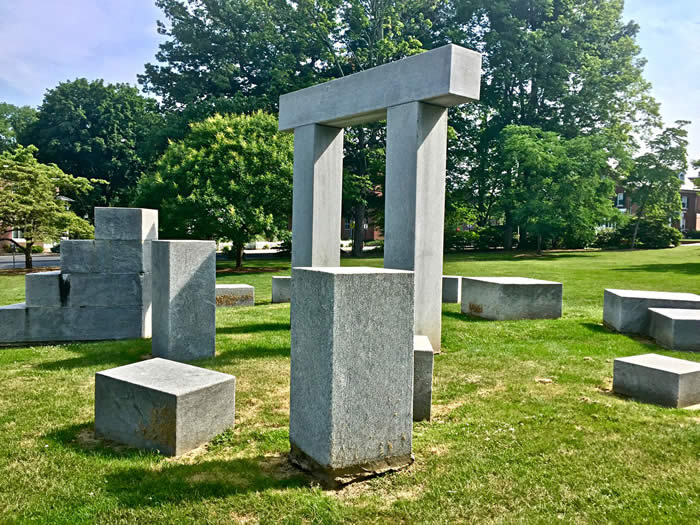 |
||
| "Stroudhenge" greets you at the entrance to ESU. |
Comments from other hikers:
Be the first to comment!
Share your experiences of this trail -- what you saw, how you liked it:
